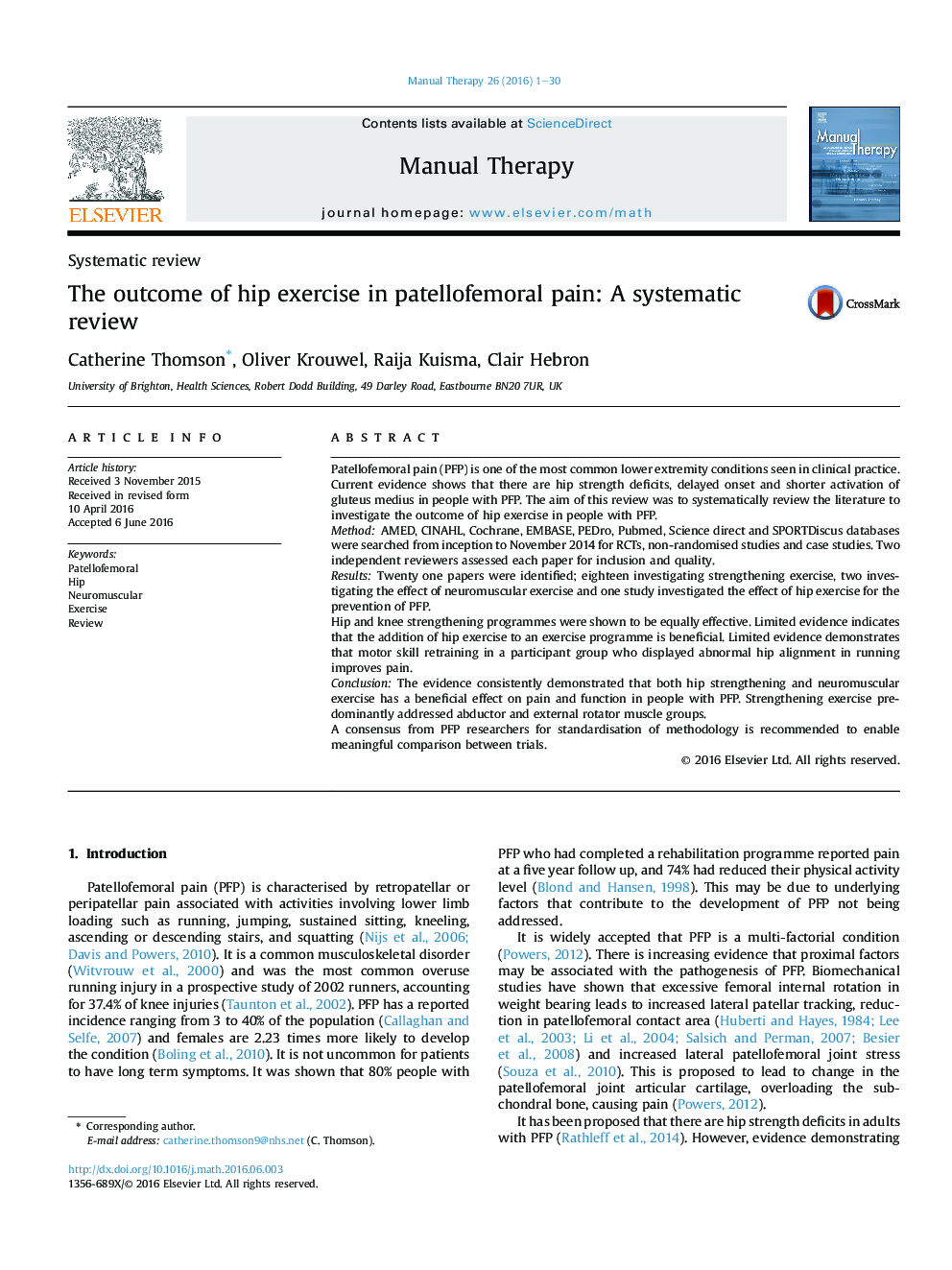| Article ID | Journal | Published Year | Pages | File Type |
|---|---|---|---|---|
| 2624778 | Manual Therapy | 2016 | 30 Pages |
•Hip strengthening exercise reduced pain and improved function in subjects with patellofemoral pain.•Motor skill retraining was effective in the management of patellofemoral pain in runners displaying abnormal kinematics.•Systematic review of all available evidence; no restriction of types of studies.
Patellofemoral pain (PFP) is one of the most common lower extremity conditions seen in clinical practice. Current evidence shows that there are hip strength deficits, delayed onset and shorter activation of gluteus medius in people with PFP. The aim of this review was to systematically review the literature to investigate the outcome of hip exercise in people with PFP.MethodAMED, CINAHL, Cochrane, EMBASE, PEDro, Pubmed, Science direct and SPORTDiscus databases were searched from inception to November 2014 for RCTs, non-randomised studies and case studies. Two independent reviewers assessed each paper for inclusion and quality.ResultsTwenty one papers were identified; eighteen investigating strengthening exercise, two investigating the effect of neuromuscular exercise and one study investigated the effect of hip exercise for the prevention of PFP.Hip and knee strengthening programmes were shown to be equally effective. Limited evidence indicates that the addition of hip exercise to an exercise programme is beneficial. Limited evidence demonstrates that motor skill retraining in a participant group who displayed abnormal hip alignment in running improves pain.ConclusionThe evidence consistently demonstrated that both hip strengthening and neuromuscular exercise has a beneficial effect on pain and function in people with PFP. Strengthening exercise predominantly addressed abductor and external rotator muscle groups.A consensus from PFP researchers for standardisation of methodology is recommended to enable meaningful comparison between trials.
